Interview with Director Matt Tyrnauer of “Where’s My Roy Cohn?”
Written by: Christopher Llewellyn Reed | September 20th, 2019
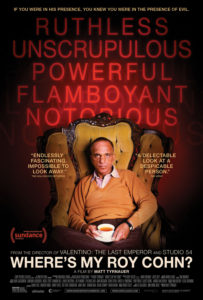
Director Matt Tyrnauer’s latest documentary, Where’s My Roy Cohn?, opens in Los Angeles and New York today (and in Washington, DC, and other cities on September 27, and beyond). I saw the film at the 2019 Sundance Film, Festival, where I reviewed at Hammer to Nail. It’s a comprehensive profile of the controversial lawyer Roy Cohn, red-baiting advisor to Joseph McCarthy in the 1950s, counselor to mobsters after that, and eventually a mentor to a young Donald Trump (from whose plaintive cry, in the face of his first Attorney General, Jeff Sessions, recusing himself from the Russia investigation, comes this movie’s title). Cohn died of complications from (unacknowledged) AIDS in 1986 (he was gay and very much in the closet), after finally being disbarred, an ignominious end to a man once feared by all who crossed him. Tyrnauer (Studio 54) and I had a nice phone chat just a few days ago, and here is a condensed digest of our conversation, edited for length and clarity.
Christopher Llewellyn Reed: So, I’ve now seen your last three films, Scotty and the Secret History of Hollywood, Studio 54 and this, and all three deal with hidden histories, and there also seems to be a direct connection between Studio 54 and this, given Roy Cohn’s legal representation of that legendary nightclub’s owners when they got in trouble. Could you talk about how you went from one film to the next and whether there was any overlap in the productions of each?
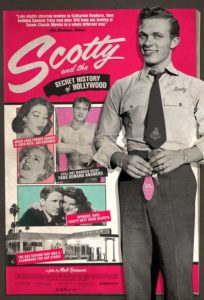
Matt Tyrnauer: Well, going chronologically, Scotty and the Secret History of Hollywood, as the title suggests, is about a counter-narrative, or secret history, of a very consequential place, Hollywood, through the lens of Scotty Bowers, who was known, for lack of a better term, as a pimp to the stars. His career spanned from the end of the Second World War all the way down to even recent days. And he represents a kind of coherent counter-narrative of Hollywood, which was like the rest of the world in mid-century, extremely homophobic, and had a kind of straight-washed point of view on the world.
And because it’s Hollywood and it’s sending this message all around the world, it’s very important. And Scotty tells us what was really going on, which in many cases reveals that the super-hetero persona of the movie stars was just all a lie. And that I was attracted to that because I love a counter-narrative and I think that Hollywood’s a really important story.
And then the theme continues with Studio 54. So, everyone really thinks of Studio 54 in terms of sex, drugs, discos and celebrity. And indeed, it was immortal for that and it influenced the culture for that. But for me, the real way to look at it was this horrible coincidence that I thought needed to be explored. Studio 54 is founded in April of 1977 and lasts for 33 months until its creators, Steve Rubell and Ian Schrager, are sentenced to federal prison for tax evasion in a massive skimming operation that operated in the club.

When they are deposed as the heads of this disco, and really in essence the Kings of New York, at the same time the first unreported, or unnamed, cases of HIV/AIDS are cropping up. And that society that sustained Studio 54 and really made it what it was was about to be extinguished; really decimated. And that was the LGBTQ community that was the backbone of the club and really was leading New York culture at the time.
That was the story I thought needed to be told 40 years on and was a much more interesting story than just dwelling on fabulosity and party culture, which I find deeply uninteresting. So that’s another counter-narrative. Out of Studio 54, as you point out, comes another story which I drill down into in the current movie, which is called Where’s My Roy Cohn?
So, in 2016, while I was making Studio 54, I was marinating in all this amazing archival film about the nightclub and one of the main characters cropping up in this archival footage was the lawyer, Roy Cohn. He was the lawyer for Steve Rubell and Ian Schrager, and defended them in this corruption case that the government had brought against Rubell and Schrager and the nightclub. And in fact, he lost the case for them. There were many lawyers, but he was out front because I believe the technical term for him is a “media whore.” So, he was always in front of the cameras.
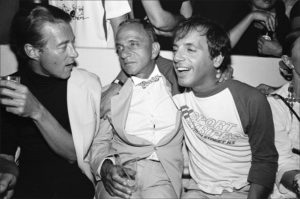
Here I am, watching all of this incredible footage of him really being this attack dog for Studio 54, Rubell and Schrager and I’m thinking to myself, where’s the Roy Cohn documentary? No one’s ever done one. He’s leaping off the screen, incredible presence on camera, in a very dark way, of course. I knew the story and I knew that he was the creator and mentor of Donald Trump.
During the 2016 election cycle, while I was, as a political news addict, convinced that Trump would lose, I kept thinking, well, the Roy Cohn-Trump relationship would be a great movie, but Trump will lose and movie distributors and studios ask you one question when you propose something to them, and that is, “Why now?” So, in a Hillary Clinton presidency, the why now question would be almost impossible to answer. But then things went sideways, as we all know.
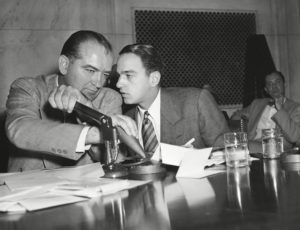
And the next day I wrote the treatment for this film, which is a kind of history of the political underworld as defined by Cohn. He goes from being bold footnote to American history as chief counsel to Senator Joseph McCarthy as the prosecutor who virtually pulled the switch on Julius and Ethel Rosenberg in the spy trial of the 1950s, to then becoming the ultimate power broker, mob attorney and fixer of New York in the mid-century. He then meets a young man named Donald Trump in the early ’70s and really almost single-handedly creates Donald Trump and even almost predicts his presidency in an incredible piece of film I found of him being interviewed in the late ’70s.
So this film is like doing the bible from Lucifer’s perspective, in a certain way. I mean, it’s really taking the dark side of things and drilling down on the legacy of a really evil man who did a lot of really unforgivable, terrible things. I mean, we’re talking about world-class, terrible in terms of hypocrisy and corruption and self-interest, and in some cases even suspected murder, and his connection to the man who is now president of the United States.
CLR: Donald Trump is obviously an important part of your conception and he does figure in the film in the final third, but he’s not the focus. The focus is Roy Cohn, yet you titled the film, “Where’s My Roy Cohn?,” which is of course a line that Donald Trump spoke, but he hadn’t said it yet when you were starting your film. At what point did you come up with that as your title?
MT: It’s true. Trump gave me the title for the film. So he’s in, I think, 2017 when Jeff Sessions … isn’t it horrible to feel sorry for Jeff Sessions, by the way? I mean, feeling badly for this man who’s just really the one of the most godawful politicians ever in American history.
CLR: If I can make an aside … I think Donald Trump’s true talent lies in making us all feel bad for a variety of characters who are treated poorly by him, whom we might not otherwise feel sympathetic towards.
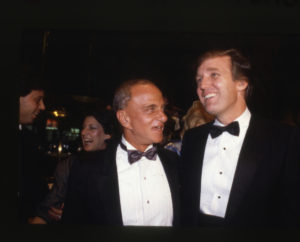
MT: Yeah, it’s a unique talent. But Trump is complaining about Sessions in the White House somewhere and basically is complaining because the Attorney General Jeff Sessions won’t behave like a mafia attorney, which Roy Cohn was. He was basically not a real lawyer; he was just a fixer. So, Trump blurts out in frustration, “This is terrible. Where’s my Roy Cohn?” Wistful, almost like, “Where’s my mommy?” to help protect him against this series of political pickles that he was in and he saw becoming even more difficult and insurmountable for him.
So, I was in the middle of making the film at that time and I thought, well, that’s an interesting title. It comes directly from the man himself. And though the movie is not a Trump movie, it’s a connecting-the-dots movie about malignant politics and self-interest and the history of this in this country as personified by Cohn and the creation of a President Trump from beyond the grave, which is, to my astonishment and anyone else’s who pays attention to politics, something that literally occurred.
CLR: What was your process of gathering the various interview subjects for the film? And I have to say, I saw your film at Sundance, where there was not one, not two, but three films which featured journalist Ken Auletta as a talking-head interview subject. There was yours, there was Alex Gibney’s The Inventor: Out for Blood in Silicon Valley and then there was one more, Untouchable, the one about Harvey Weinstein. And so Ken Auletta was, for me, the standout star of the festival.
MT: Which is how it should be!
CLR: So, beyond Ken Auletta, and please tell me how you picked Ken Auletta, how did you get all your interview subjects?
MT: When I start these films, I do a deep dive into research and people who you might want to interview kind of come to the surface. Ken Auletta is a great example. He’s one of the greatest journalists of our time; writes for The New Yorker. In the ’70s, early in his career, he wrote a really hard-hitting profile of Cohn for Esquire magazine called “The Legal Executioner.” And it was the first time a lengthy, impactful piece was written about Cohn, who had been given a free pass by the media, even though everyone knew what he was up to for years.This should sound familiar to you because Trump really got away with the same type of thing.
So, Ken was the first person I called and then you see who’s alive and who was actually there. And there were many members of Cohn’s family whom I navigated to. Among them, three of them are in this film. One of them is the author Anne Roiphe, who is a cousin. The other is a journalist who won a Pulitzer Prize named David Marcus and the other is Gary Marcus, who’s an entrepreneur. They were all willing to speak and gave me wonderful interviews with firsthand details.
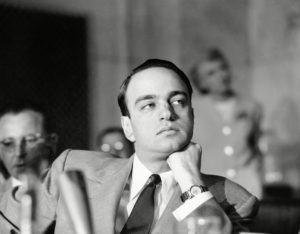
Courtesy Sony Pictures Classics
A bit of biographical detail about Cohn that’s interesting, that I didn’t necessarily know, was the extent to which he was from a very wealthy family. He was from one of the richest Eastern European Jewish immigrant families and they owned a major bank. They owned Lionel Trains, they own Phillips-Van Heusen, which was the leading shirt company at the time, and they owned Q-tips. So, he’s to the manor born, if you will, and had a real leg up and that world was a particular world. And then you kind of look for people that understand the world he came from to give you a context, people that worked for him in his law firm and I just started to sketch out the map of the people and the voices I wanted in the film and contacted people to see who’ll play ball.
CLR: Was there anyone you wanted and couldn’t get?
MT: Well, yeah, there are always ones who get away. Robert Morgenthau, who just died, was the US Attorney for the Southern District of New York and then later the District Attorney of Manhattan County, and he could have spoken but declined. He went after Cohn in Cohn’s lifetime and indicted him three times. It was kind of like the Wile E. Coyote to Cohn’s Road Runner who always was wiggling out of these prosecutions. Unfortunately, he wasn’t able to speak.There were a few other people, near contemporaries of his, who just, for various reasons, weren’t available. There was a Bronx Borough president named Stanley Friedman who then became a law partner of Cohn’s. He’s, I believe, 100 years old and lives in Florida. I contacted him several times and never got a response.
CLR: I was really blown away by your film’s revelation that Roy Cohn was the one behind getting both John Anderson to run for president as a third-party candidate in 1980, thereby helping Reagan, and then also the anti-Geraldine Ferraro smear campaign in 1984, also helping Reagan. Was this well known at the time?
MT: No! I knew a lot of people who were high up in the Mondale-Ferraro campaign and I’m not even sure they knew that, but it makes a lot of sense, because if you go and look at the newspaper record at the beginning of the cratering of the Ferraro Vice Presidential candidacy, there are headlines. A crank call tipped off the Feds to press for Ferraro’s mafia ties. Now who would have been more apt to know about the mafia ties between Ferraro’s husband, John Zaccaro, who was a businessman in New York, and organized crime? That was the assertion and it really damaged the candidacy. Cohn was perfectly positioned to know that information and it was exactly the type of thing he did. He would drop the dime on political opponents and leak things to the press.
And then this astonishing fact that we have, from two different sources in the film. One is Roger Stone; I think he’s someone who needs a lot of fact checking. It was that there was a political fix where Cohn, in order to win New York state for Reagan, gets John Anderson on the Liberal Party line. And in New York, there are different sub-party lines on the ballot. It’s kind of complicated, but Anderson ran as a Liberal Party candidate and he split the vote, which accrued to Reagan’s benefit. So that’s the Roger Stone story. He says it was set up and it worked. And then a lawyer who was in Cohn’s office at the time says he was sitting with Roy Cohn when Nancy Reagan called him to thank him for winning the presidency for Ronald Reagan. And so you have two sources who don’t know each other pointing in the same direction, which was pretty fascinating.

CLR: As I mentioned, I saw your film at Sundance, and I think it was the day after or the day of Roger Stone’s indictment or arrest. I can’t remember what it was.
MT: It was just hours after he had been arrested.
CLR: His appearance on screen as an interview subject was a nice little bit of inadvertent comedy. It got a laugh that you probably hadn’t planned.
MT: When the film first screens, I stand in the back and I count the laughs. That’s what I do. So the fact that we had an extra one was very gratifying.
CLR: Well, thanks for making the film. I’ve now enjoyed three films of yours in a row, and I wish you all good things with its upcoming release.
MT: Thanks so much!
Intrigued? Check your local theaters in Los Angeles and New York for where to see the film this weekend, and then look for its wider release starting on September 27.


